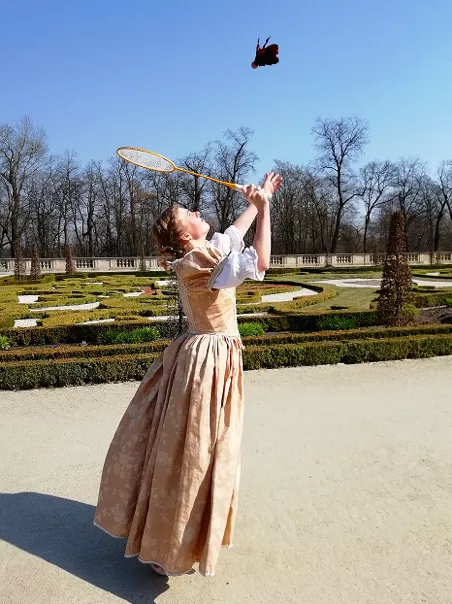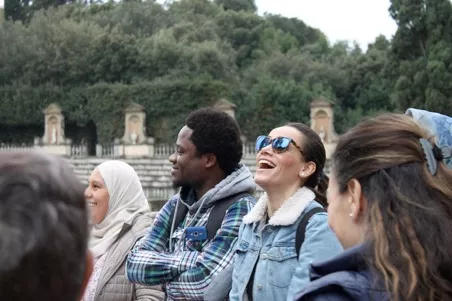Local community engagement in museums’s programs: practices, experiences and challenges
Over the last 15 years thanks to debates in Social Museology, museums institutions recognized the challenges to democratizing cultural heritages and making them more accessible to wider audiences, more socially relevant and responsive to their publics’ changing needs and interests.
As a result, museums are increasingly engaged in providing accessible, friendly, and inspiring places for local communities' involvement. Several programs were launched to reinforce the role of museums as a public space, lifelong learning institutions able to offer education, cultural and social opportunities for all. Different audiences are activelyinvolved, focusing on hypothetical common needs (disable people such as blind people or people with dementia, newcomers interested in language support and cultural education, elderly people, teens, etc.). This does not only result in dialoguing with new audiences but in a wider sense empowering people trained on the programmes to offer their own museum’s narratives.
In many ways, the MOC - Museum of Communities project, run by Museum of King Jan III’s Palace at Wilanów (Poland), Royal Palace of Gödöllő (Hungary), and Stazione Utopia (Italy) is a result of that debate.
Among the volunteers, there are people of various ages, from teens to seniors. They are often residents in the surrounding areas who want to share their time and skills and get involved in various Museum activities. Due to the pandemic and the restrictions, the number of people involved in volunteering decreased in 2020 and they largely worked online. In general, -volunteers sign a cooperation agreement and after its completion of training - a certificate with references, they even get free entry to the museums, free participation in lectures, club meetings, concerts, theatre performances organized in the museum, social events and integration meetings, e.g. Christmas meeting or visiting an exhibition in another museum together.. All these benefits contribute to make them part of cultural heritage integrating their presence into daily museum’s activities such as assisting visitors, offering educational programs orsupporting cultural events.

The three project partners have already developed some programmes related to community engagement for instance the Castle Friends Association - with 50 active volunteers -, provides help to the Royal Palace of Gödöllő in development, local history researches, guest reception and arranging of competitions, which is returned by organizing cultural programs. It has been experienced that while stimulating elder age-classes to develop their interests in arts, history, geography, technique and so on, increase of social relationships is supported as well. Castle Friends Association was established after the regime change in order to make committed civil and local value protectors able to take part in revitalization of the palace. The association’s work is inseparable not only from museum but also from tourism activities, so it has become a culture-transferring organization by itself.
The Association arranges presentations, trips and other events, builds up new connections, and forms civil network around the Palace.
In regard of the Palace, the members of the association had „adopted” the King Hill Pavilon which due to the lack of permanent staff usually cannot be visited; however, in case of request, our volunteers introduce the building to visitors
Many of the members have completed exhibition guide exam, they help to introduce temporary exhibitions in the summer period. The association offers help in preparing background materials and presentations.
In the frames of the program, they organize presentations monthly, on which people with various professions connected to museums and heritage conservation, like art historian, architect, restorer, costume historian, private collector, gilding, teacher, marketing manager, actress, researcher, sculptor, technique historian, local historian, gardener, museum teacher has been introduced. Lecturers can be asked questions, audience can touch or try on the objects of the presentation, and they can exchange opinions with each other.
The three project partners have already developed some programme related to community engagement, for instance, the Castle Friends Association,with 50 active volunteers, provides help to the Royal Palace of Gödöllő in development, local history researches, guest reception, and arranging of competitions, which is returned by organizing cultural programs. It has been experienced that while stimulating elder age classes to develop their interests in arts, history, geography,and so on, an increase of social relationships is supported as well. Castle Friends Association was established after the regime change in order to make committed civil and local value protectors able to take part in the revitalization of the palace. The association’s work is inseparable not only from the museum but also from tourism activities, so it has become a culture-transferring organization by itself.
The Association arranges presentations, trips, and other events; builds up new connections, and forms a civil network around the Palace.
In regard to the Palace, the members of the association had „adopted” the King Hill Pavilion which usually cannot be visited due to the lack of permanent staff. However, our volunteers can give tours of the building upon visitors' request.
Many of the members have completed the exhibition guide exam and they help to introduce temporary exhibitions in the summer period. The association offers help in preparing background materials and presentations.
In the frames of the program, each month they prepare presentations that are later being introduced topeople connected to the museums and heritage conservation, like art historians, architects, restorers, costume historians, private collectors, goldsmiths, teachers, marketing managers, actors, researchers, sculptors, etc.During the presentation lecturers can be asked questions, and the audience can touch or try on the objects of the presentation.
The contact between members of the association is more and more based on electronic media. Online communication reduces the gap between different age classes and helps the members not to miss any event
Activities based on common interests and cooperation between participants of different age ensure permanent and powerful engagement with the association, which makes the building of the palace and its cultural value serve as a treasure for the town and both its inhabitants and visitors. The stability of the association is a result of the good balance between training and self-training, preservation, and creation of values.
******
Over recent years Museum of King Jan III’s Palace at Wilanów has offered a wide variety of activities for volunteers, allowing everyone to choose the form of involvement that best suited them. Among the choices offered there were:
- Wilanów storytellers. A project in which volunteers convinced us that every museum object has a story to tell and is worth discovering.
- Garden Volunteers. As a support of the work of royal gardeners volunteers were engaged in various minor garden chores, like weeding flower beds, raking paths and lawns, watering plants.
- Once Upon a Time in Wilanów. A project of a community archive created by the museum staff, volunteers, history enthusiasts and all those who hold Wilanów dear. The Facebook group currently gathers over 750 members. Together they create a space for discussion, exchange of memories, ideas and mutual inspiration. They discover the history of Wilanów as it emerges from the stories of its inhabitants and they are looking for memorabilia related to the palace and historical buildings of the district. Once again, in these difficult times, the online form of the project makes it all possible. As part of the project, volunteers helped with promotion and assisted in scanning and describing selected materials, which were then returned to their owners. So far we have scanned 300 photos from family albums, 30 of them were digitally retouched. They also look for witnesses to history and will record their memories – they have already received training on how to conduct such recordings. By including volunteers and retired employees, among which there are also seniors and lonely people, the project helps to create a diverse, intergenerational group of friends of the museum.
- Support at various events, exhibitions, and festivals organized by the Museum. Volunteers were invited to help organize and promote the festival as well as contact and assist visitors, conduct surveys, and other activities.

PHOTO 3: Play with the King. The project encouraged volunteers to explore old-time games. Photo: Nela Kokoszk
******
Stazione Utopia provides different cultural programs aimed at including particularly newcomers into the museums' education programs as intercultural mediators, turning them into active stakeholders able to enrich the contents of museums with specific contribution coming from extra European cultures, values, religions etc.

The Amir project launched in September 2018, has trained 40 foreigners from 20 different countries —some of whom are long-time residents, while others are refugees—to lead visits through some of Florence and Fiesole’s principal museums in Italy. The concept for AMIR derived from the desire to find a way for foreigners to be able to not only visit our museums and learn about Western cultural heritage but also train them to lead guided tours for Italian, European and extra-EU visitors. which offers the opportunity for an intercultural dialogue depending on the type of audience. This chance essentially produces new stories and values about cultural heritage, considering the heritage as transformative and dynamic collections of goods, which can be reinterpreted, recontextualized, and each time renegotiated.

Beside that, in the summer 2021, Stazione Utopia launched GERMOGLI (sprouts) an innovative programme aimed at training a small group of refugees and NEETs (neither in education either in training) people as gardeners into the Villa Medicea La Petraia in Florence. It was an opportunity for them, to gain new skills and apply for a job.




